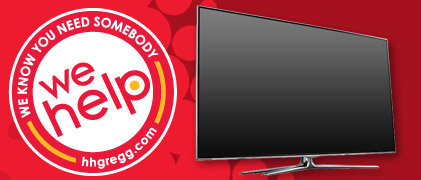Source: hhgregg
Appliances, electronics, and furniture retailer hhgregg (HGGGQ) reported disappointing results for fiscal 2014 on 20 May 2014 . Its comparable-store sales declined 9.9% to $538.3 million and it registered a loss per share of $0.25 compared with diluted earnings per share of $0.31 in the prior year. Hhgregg attributed this lackluster set of results to the weakness in its consumer electronics business and bad weather. It has already put in place several strategic initiatives to reverse its fortunes.

Source: hhgregg
Product-mix shift
Among the variety of products that hhgregg sells, consumer electronics remain the most competitive. With this in mind, hhgregg has sought to maintain the balance between traffic drivers (consumer electronics) and high-margin products (appliances). While consumer electronics accounted for 59% of hhgregg's sales in 2010, they represent only 38% of its 2014 revenue.
Over the past few years, hhgregg has worked on expanding under-penetrated product categories such as appliances and this product-mix shift is likely to continue in the future. Appliances currently make up 47% of hhgregg's top line, in contrast with 35% in 2010. Similarly, hhgregg has increased its sales contribution from computing & wireless products from 4% in 2010 to 10% in 2014.
The results speak for themselves. Notwithstanding soft overall revenue growth, hhgregg has achieved its 11th consecutive quarter of comparable-store sales growth in the appliance category. Unlike consumer electronics which depend heavily on new-product pipelines, demand for appliances tends to be more steady as 65% of purchases involve replacements. To drive the appliances business, hhgregg plans to expand its product assortment and tailor its SKUs to local market demand.
Another new area of focus for hhgregg is furniture. The furniture business has grown rapidly to account for 5% of hhgregg's sales in a short span of time and hhgregg is optimistic that furniture will eventually account for 10% of its top line. More importantly, as furniture products tend to be big-ticket items they also stimulate the usage of credit. This works to hhgregg's advantage because of its strengths in credit, which is something that I will touch on below.
It's necessary to compare hhgregg with its peer Conn's (NASDAQ: CONN) to evaluate if hhgregg will be a successful turnaround play. In contrast with hhgregg, Conn's grew same-store sales and diluted EPS for fiscal 2014 by 26.5% and 62.8%, respectively. Conn's is obviously doing some things right that would be worth hhgregg's efforts to learn about.
Hhgregg isn't the only hard-goods retailer that has tweaked its product mix to increase its profitability. Conn's remodeled and relocated 11 and 22 stores in fiscal 2014 and 2013, respectively, to expand retail selling space at these stores by more than a quarter. It has allocated the extra square footage to higher-margin furniture and mattress products.
The results have been impressive as Conn's expanded its gross margin from 26.5% in 2011 to 40.6% in 2014, inline with the doubling of the sales contribution of furniture and mattress products to 37% over this period.
Building customer loyalty with credit
Given that most hard-goods retailers' product assortments have little differentiation, credit offerings can be a very effective tool for keeping customers happy and retaining them; hhgregg has seen its private-label credit cards drive higher average ticket size and greater brand loyalty. Its private-label credit cards contributed to 36% of its fiscal 2014 sales, compared with 29% in 2011.
Looking ahead, hhgregg will highlight the attractiveness of its private-label credit cards with respect to special offers and in-store payment options to further encourage card usage. It will also explore new credit offerings that will be well-received by its customers. Hhgregg forecasts that two-fifths of its fiscal 2015 business will involve at least one of its credit offerings.
While hhgregg only offers non-recourse financing options, Conn's has taken the use of credit as a strategic competitive advantage to a different level. Conn's has more than four decades' experience with providing in-house credit to its customers, and this helps finance about 78% of its total sales. Its in-house credit program is something that its peers can't match.
Firstly, most subprime borrowers won't receive loan approval for third-party financing options offered by other retailers. Secondly, few retailers have similar credit offerings targeted at un-banked and under-banked customers. Non-bank lenders may be another alternative for these credit-constrained customers, but their interest rates would be much higher than those of Conn's.
Conn's internal statistics validate its belief in using in-house credit as a marketing tool as it has seen high rates of repeat purchases for customers who use credit. In fact, in comparison with customers who don't rely on credit, Conn's credit customers make an average of two additional purchases within the next five years.
Foolish final thoughts
While the success of any turnaround effort is anyone's guess, hhgregg's chances are boosted by the fact that its strategic initiatives mirror those of its successful peer Conn's. While the near-term outlook remains bleak with hhgregg expecting annual comparable-store sales to be between 'negative low single digits to flat', I have confidence in its long-term prospects as a successful turnaround play.





